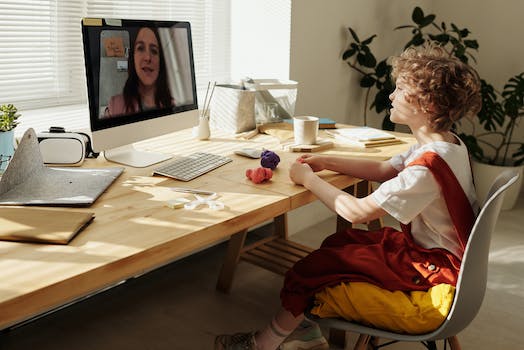Table of Contents
“Unlock Your Potential: Master the Art of Effective Communication in the Workplace”
Introduction
Introduction:
Effective communication skills are essential in the workplace, as they play a crucial role in building strong relationships, fostering teamwork, and achieving professional success. Whether you are interacting with colleagues, clients, or superiors, honing your communication skills can significantly enhance your ability to convey ideas, resolve conflicts, and collaborate effectively. In this article, we will explore ten practical ways to improve your communication skills at work, enabling you to become a more confident and influential communicator in any professional setting.
Effective Listening Techniques for Better Communication at Work

Effective Listening Techniques for Better Communication at Work
In today’s fast-paced work environment, effective communication is crucial for success. Whether you are a manager, team leader, or an individual contributor, having strong communication skills can make a significant difference in your professional growth. One essential aspect of communication that often gets overlooked is listening. Listening is not just about hearing what others say; it involves actively engaging with the speaker and understanding their message. In this article, we will explore ten effective listening techniques that can help you improve your communication skills at work.
Firstly, it is important to give your full attention to the speaker. Avoid distractions such as checking your phone or thinking about other tasks. Maintain eye contact and nod occasionally to show that you are actively listening. By doing so, you create a positive environment that encourages open and honest communication.
Secondly, practice empathy while listening. Put yourself in the speaker’s shoes and try to understand their perspective. This will help you connect with them on a deeper level and build trust. Show empathy by acknowledging their feelings and validating their experiences.
Next, avoid interrupting the speaker. Allow them to express their thoughts fully before responding. Interrupting can be perceived as disrespectful and may hinder effective communication. Instead, wait for an appropriate pause to ask clarifying questions or provide your input.
Another technique to enhance your listening skills is to ask open-ended questions. These questions encourage the speaker to elaborate and provide more information. By asking open-ended questions, you demonstrate your interest in understanding their viewpoint and encourage a more meaningful conversation.
Active listening involves not only hearing the words but also paying attention to non-verbal cues. Observe the speaker’s body language, facial expressions, and tone of voice. These non-verbal cues can provide valuable insights into their emotions and help you better understand their message.
Paraphrasing is another powerful technique to improve your listening skills. After the speaker has finished talking, summarize their main points in your own words. This demonstrates that you have understood their message and allows for clarification if needed.
Additionally, practice reflective listening. Reflective listening involves restating the speaker’s words to confirm your understanding. For example, you can say, “So, what I hear you saying is…” This technique not only shows that you are actively engaged but also helps to avoid miscommunication.
Silence can be a powerful tool in effective listening. Allow for moments of silence after the speaker has finished talking. This gives them the opportunity to reflect on their thoughts and encourages them to share more information. Avoid rushing to fill the silence, as it can disrupt the flow of the conversation.
Furthermore, be aware of your own biases and judgments. It is natural to have preconceived notions, but they can hinder effective communication. Practice suspending judgment and approach each conversation with an open mind. This will help you truly listen to the speaker’s perspective without any biases clouding your understanding.
Lastly, follow up on conversations. After a discussion, send a follow-up email summarizing the key points and any action items. This not only reinforces your understanding but also ensures that everyone is on the same page.
In conclusion, effective listening is a vital skill for better communication at work. By giving your full attention, practicing empathy, avoiding interruptions, asking open-ended questions, and paying attention to non-verbal cues, you can significantly improve your listening skills. Additionally, techniques such as paraphrasing, reflective listening, and utilizing silence can enhance your understanding and foster meaningful conversations. By being aware of your biases and following up on conversations, you can ensure that your communication is clear and effective. Incorporating these ten techniques into your daily interactions will undoubtedly improve your communication skills and contribute to your professional success.
The Importance of Nonverbal Communication in the Workplace
Effective communication is a crucial skill in the workplace, and it goes beyond just the words we speak. Nonverbal communication plays a significant role in conveying messages, building relationships, and creating a positive work environment. In fact, studies have shown that nonverbal cues can account for up to 93% of the overall impact of a message. Therefore, understanding and improving your nonverbal communication skills can greatly enhance your effectiveness as a communicator in the workplace.
One important aspect of nonverbal communication is body language. Our body movements, gestures, and facial expressions can convey a wealth of information to others. For instance, maintaining eye contact during a conversation shows attentiveness and interest, while avoiding eye contact may indicate disengagement or lack of confidence. Similarly, open and relaxed postures can signal approachability and openness, whereas closed-off postures, such as crossed arms, may indicate defensiveness or resistance.
Another crucial element of nonverbal communication is tone of voice. The way we speak, including our pitch, volume, and intonation, can greatly influence how our message is received. Speaking too softly may make it difficult for others to hear and understand us, while speaking too loudly can come across as aggressive or overbearing. Additionally, the tone of our voice can convey emotions and attitudes, so it is important to be mindful of how we sound when communicating with others.
Furthermore, facial expressions are powerful nonverbal cues that can greatly impact communication. Smiling, for example, can create a positive and welcoming atmosphere, while frowning or scowling may create tension or discomfort. It is important to be aware of our facial expressions and ensure that they align with the message we are trying to convey.
In addition to body language, tone of voice, and facial expressions, other nonverbal cues such as hand gestures, posture, and personal space also play a role in effective communication. Using appropriate hand gestures can help emphasize key points and make our message more engaging. Maintaining good posture, such as sitting or standing up straight, can convey confidence and professionalism. Additionally, respecting personal space and being mindful of others’ boundaries can contribute to a positive and respectful work environment.
Improving your nonverbal communication skills can be a gradual process, but there are several strategies you can employ to enhance your effectiveness in this area. First and foremost, self-awareness is key. Take the time to observe and reflect on your own nonverbal cues. Pay attention to how you use your body, your tone of voice, and your facial expressions in different situations. This self-reflection will help you identify areas for improvement and make necessary adjustments.
Additionally, it is important to be attentive to the nonverbal cues of others. Observe how your colleagues, supervisors, and clients communicate nonverbally. This will help you better understand their messages and respond appropriately. By being mindful of nonverbal cues, you can also avoid misinterpretations and misunderstandings.
Furthermore, practice active listening. When engaging in conversations, give your full attention to the speaker and demonstrate your engagement through nonverbal cues. Maintain eye contact, nod your head to show understanding, and use appropriate facial expressions to convey interest and empathy. These nonverbal cues will not only enhance your understanding of the message but also make the speaker feel valued and heard.
In conclusion, nonverbal communication is a vital component of effective workplace communication. By improving your nonverbal communication skills, you can enhance your ability to convey messages, build relationships, and create a positive work environment. Through self-awareness, attentiveness to others’ nonverbal cues, and active listening, you can become a more skilled and impactful communicator in the workplace.
Building Rapport and Trust in Professional Relationships
Building Rapport and Trust in Professional Relationships
Effective communication is a crucial skill in the workplace. It not only helps in conveying ideas and information clearly but also plays a significant role in building rapport and trust among colleagues. When there is trust and rapport, teams can collaborate more effectively, leading to increased productivity and job satisfaction. In this article, we will explore ten ways to improve your communication skills at work, specifically focusing on building rapport and trust in professional relationships.
1. Active Listening: One of the most important aspects of effective communication is active listening. This means giving your full attention to the speaker, maintaining eye contact, and avoiding distractions. By actively listening, you show respect and interest in what the other person has to say, which helps in building trust.
2. Empathy: Being empathetic towards your colleagues is essential for building rapport. Try to understand their perspectives, feelings, and concerns. Show genuine concern and support, and avoid being judgmental. Empathy creates a positive environment where people feel valued and understood.
3. Open and Honest Communication: Transparency and honesty are key to building trust. Be open about your thoughts, ideas, and concerns. Avoid withholding information or being vague. When colleagues see that you are honest and straightforward, they are more likely to trust you.
4. Non-Verbal Communication: Non-verbal cues, such as body language and facial expressions, play a significant role in communication. Pay attention to your non-verbal signals and ensure they align with your words. Maintain good posture, use appropriate gestures, and smile genuinely. This helps in conveying sincerity and building rapport.
5. Respectful Communication: Treat your colleagues with respect and professionalism. Avoid interrupting, talking over others, or using derogatory language. Show appreciation for their contributions and ideas. Respectful communication fosters trust and creates a positive work environment.
6. Building Personal Connections: Take the time to get to know your colleagues on a personal level. Engage in casual conversations, ask about their interests, and show genuine interest in their lives. Building personal connections helps in creating a sense of camaraderie and trust.
7. Feedback and Constructive Criticism: Providing feedback and constructive criticism is essential for growth and improvement. However, it is crucial to deliver it in a respectful and constructive manner. Focus on the behavior or action, not the person, and offer suggestions for improvement. This approach helps in building trust and shows that you genuinely care about their development.
8. Conflict Resolution: Conflicts are inevitable in any workplace. However, how you handle conflicts can significantly impact your professional relationships. Approach conflicts with an open mind, actively listen to all parties involved, and seek a win-win solution. Effective conflict resolution builds trust and strengthens relationships.
9. Flexibility and Adaptability: Being flexible and adaptable in your communication style is crucial for building rapport. Different people have different communication preferences, so be willing to adjust your approach accordingly. This shows that you value their communication style and are willing to meet them halfway.
10. Follow Through on Commitments: Finally, one of the most important ways to build trust is by following through on your commitments. If you promise to do something, make sure you deliver on time and with quality. Consistency in your actions builds trust and credibility among your colleagues.
In conclusion, building rapport and trust in professional relationships is essential for effective communication in the workplace. By actively listening, being empathetic, communicating openly and honestly, and showing respect, you can create a positive work environment where trust and collaboration thrive. Additionally, building personal connections, providing feedback and constructive criticism, resolving conflicts effectively, being flexible in your communication style, and following through on commitments all contribute to building strong professional relationships. By implementing these ten strategies, you can improve your communication skills and foster trust and rapport in your workplace.
Overcoming Communication Barriers in a Multicultural Workplace
In today’s globalized world, many workplaces are becoming increasingly multicultural. This diversity brings numerous benefits, such as a variety of perspectives and ideas. However, it also presents challenges, particularly when it comes to communication. Effective communication is crucial for a harmonious and productive work environment, but language barriers, cultural differences, and misunderstandings can hinder this process. In this article, we will explore ten ways to improve your communication skills at work and overcome these barriers in a multicultural workplace.
Firstly, it is essential to be aware of your own cultural biases and assumptions. Recognizing that your way of communicating may not be the only valid one is a crucial step towards effective communication. By being open-minded and respectful of different cultural norms, you can avoid misunderstandings and foster a more inclusive work environment.
Secondly, active listening is a fundamental skill that can greatly enhance communication. Instead of simply waiting for your turn to speak, make a conscious effort to listen attentively to your colleagues. This means giving them your full attention, maintaining eye contact, and asking clarifying questions to ensure you understand their message accurately.
Thirdly, non-verbal communication plays a significant role in conveying messages. In a multicultural workplace, where verbal language may be a barrier, non-verbal cues such as facial expressions, gestures, and body language become even more important. Pay attention to these cues and be mindful of your own non-verbal communication to ensure your message is being received as intended.
Fourthly, adapting your communication style to suit your audience is crucial. Different cultures have different communication preferences, so it is essential to be flexible and adjust your approach accordingly. For example, some cultures value directness and assertiveness, while others prefer a more indirect and diplomatic style. By understanding these differences and adapting your communication style, you can build stronger relationships with your colleagues.
Fifthly, using simple and clear language is essential when communicating across language barriers. Avoid using jargon, slang, or complex vocabulary that may be difficult for non-native speakers to understand. Instead, opt for plain language and provide examples or visual aids to clarify your message.
Sixthly, building relationships and trust with your colleagues is crucial for effective communication. Take the time to get to know your coworkers on a personal level, showing genuine interest in their culture and background. This will help create a more comfortable and open environment where communication can flow more easily.
Seventhly, when faced with a language barrier, using visual aids or written communication can be helpful. Utilize tools such as diagrams, charts, or written instructions to supplement your verbal communication. This can provide additional clarity and ensure that your message is understood by all.
Eighthly, practicing empathy and understanding is essential when communicating in a multicultural workplace. Put yourself in your colleague’s shoes and try to understand their perspective and cultural background. This will help you communicate more effectively and avoid misunderstandings.
Ninthly, seeking feedback and clarification is crucial for effective communication. If you are unsure whether your message has been understood, don’t hesitate to ask for confirmation or feedback. This will help you identify and address any misunderstandings promptly.
Lastly, continuous learning and improvement are key to enhancing your communication skills. Take advantage of any training or workshops offered by your organization to develop your cross-cultural communication skills. Additionally, seek feedback from your colleagues and reflect on your own communication experiences to identify areas for improvement.
In conclusion, effective communication in a multicultural workplace is essential for a harmonious and productive work environment. By being aware of cultural differences, actively listening, adapting your communication style, and building relationships, you can overcome communication barriers and enhance your communication skills at work. Remember, effective communication is a lifelong skill that requires continuous learning and practice.
Q&A
1. What are some ways to improve communication skills at work?
– Actively listen to others.
– Practice clear and concise verbal communication.
– Use non-verbal cues effectively.
– Seek feedback and be open to constructive criticism.
– Adapt communication style to different audiences.
– Use appropriate technology for effective communication.
– Be mindful of body language and facial expressions.
– Practice empathy and understanding.
– Avoid interrupting or dominating conversations.
– Use active and assertive communication techniques.
2. Why is it important to improve communication skills at work?
– Effective communication fosters better teamwork and collaboration.
– It helps avoid misunderstandings and conflicts.
– Good communication enhances productivity and efficiency.
– It builds trust and positive relationships with colleagues.
– It enables effective problem-solving and decision-making.
– Improved communication leads to better customer service.
– It enhances leadership and management skills.
– It promotes a positive work environment.
3. How can active listening improve communication skills at work?
– Active listening involves fully focusing on the speaker and understanding their message.
– It helps avoid misinterpretation and misunderstanding.
– Active listening shows respect and empathy towards the speaker.
– It allows for better comprehension and retention of information.
– It encourages open and honest communication.
– Active listening helps build trust and rapport with colleagues.
– It enables effective problem-solving and conflict resolution.
4. How can one adapt their communication style to different audiences at work?
– Understand the needs, preferences, and communication styles of different individuals or groups.
– Use appropriate language and tone based on the audience’s level of expertise or familiarity with the topic.
– Adjust the level of detail and complexity in the message.
– Consider cultural differences and adapt communication accordingly.
– Be mindful of non-verbal cues and adjust body language and facial expressions.
– Ask for feedback to ensure effective communication with different audiences.
– Be flexible and willing to modify communication style based on the situation or context.
Conclusion
In conclusion, improving communication skills at work is crucial for professional success. By actively listening, being clear and concise, using non-verbal cues effectively, and practicing empathy, individuals can enhance their communication abilities. Additionally, seeking feedback, being open to constructive criticism, and continuously learning and adapting are essential for growth. Developing strong written and verbal communication skills, utilizing technology effectively, and being mindful of cultural differences can also contribute to effective workplace communication. Ultimately, by implementing these ten strategies, individuals can enhance their communication skills and foster positive relationships in the workplace.





